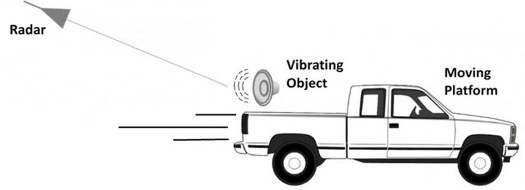 |
| October 06, 2020 | Volume 16 Issue 38 |
Designfax weekly eMagazine
Archives
Partners
Manufacturing Center
Product Spotlight
Modern Applications News
Metalworking Ideas For
Today's Job Shops
Tooling and Production
Strategies for large
metalworking plants
Navy researchers use advanced radar to hear moving targets

John Jakabosky, an electronics engineer from the U.S. Naval Research Laboratory's Radar Division, tests a millimeter wave radar in Washington, D.C. The division developed a way to sense subtle vibrations and characterize the data in order to "hear" the target's activities. [U.S. Navy photo by Leonard Pieton]
Using an advanced radar, experts at the U.S. Naval Research Laboratory (NRL) have developed ways to detect subtle vibration changes in moving targets. Sensing vibrations with a millimeter wave radar essentially gives radar operators the ability to "hear" what a target is doing.
"We've taken vibration sensing, and what we are effectively able to do now is use it as a remote sensing technique for radar. You don't have to be close, and things don't have to be still," said Christopher Rodenbeck, electrical engineer in NRL's Radar Division. "For example, many people, both military and civilian, use radar to take SAR (synthetic-aperture radar) images of the ground from space. Now we can add sound as another dimension and know what sound an object in the image is making."
Millimeter wave radar uses electromagnetic waves between 1 and 10 mm with radio frequencies between 30 and 300 GHz, and it has inherently high accuracy and resolution. The lower power system Rodenbeck's team used is capable of detecting a 1-m2 target approximately 10 km away.

A millimeter wave radar technique developed at NRL can measure vibration and reproduce sound -- even for moving targets at standoff distances. [Graphic courtesy: Christopher Rodenbeck/U.S. Naval Research Laboratory]
"The ability to reproduce sound for moving targets using radar is a totally new first step, and we can do it very accurately," Rodenbeck said. "We developed these techniques to analyze the motion of moving targets at long range, which people haven't done before."
The heart of this new radar capability is a new, patent-pending algorithm. Rodenbeck's team devised the new algorithm to translate the small, but detectable vibrations from a vehicle into sounds that can be characterized and measured.
One example of the use of this vibrometry technique is in parked cars, which could provide real-time information to drivers of other vehicles.
In a published paper, Rodenbeck described how his use of millimeter wave radar could help identify what other cars are doing in order to prevent an accident.
"We showed that if the muffler is vibrating, we can tell if a parked car is on or not. If that car is about to go into gear, we can detect a strong impulse vibration from the gear change," Rodenbeck said. "We can also easily tell whether the car door is opening or closing. Others have shown that a major cause of accidents is the misunderstanding about what parked cars are actually doing."
While radars have been used in cars for years, Rodenbeck believes simple software modifications to current automotive radars would enable safety upgrades in today's generation of vehicles and the future fleet of driverless cars.
"It's very easy to do this with current integrated circuit technology, so from a technological standpoint, this is not hard," Rodenbeck said.
VIDEO: The U.S. Naval Research Laboratory has developed ways to detect subtle vibration changes in moving targets.
NRL researchers have developed expertise with millimeter wave technology over decades of work, delivering long-range and robust target recognition capabilities in air, space, and maritime environments.
"Millimeter wave radar can see things that can't be seen at other frequencies and can't be seen optically," said Michael Walder, superintendent of NRL's Radar Division. "The whole objective is to be able to provide more information to an operator."
Source: U.S. Naval Research Laboratory
Published October 2020
Rate this article
View our terms of use and privacy policy
